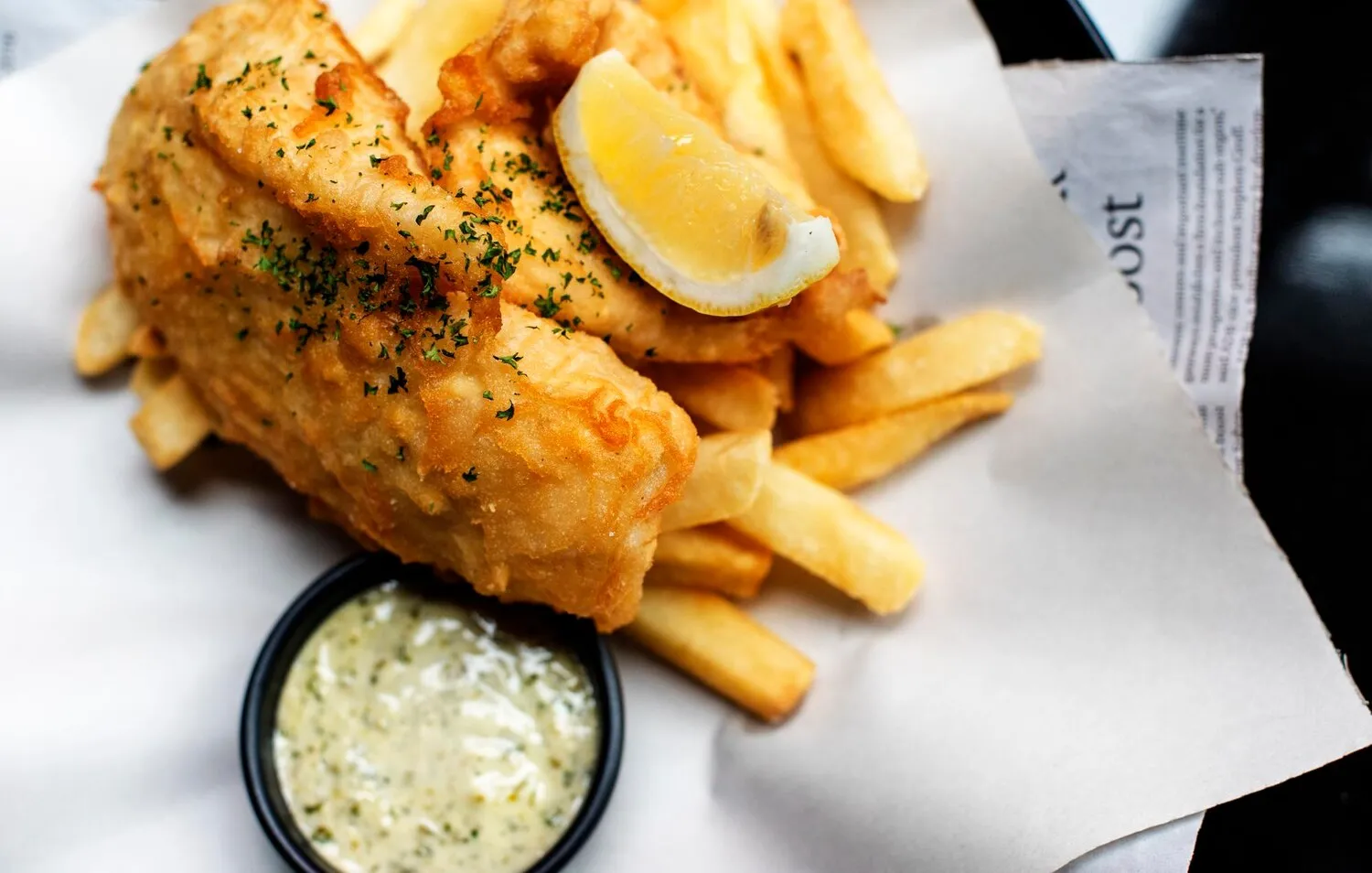
Halibut & Chips
Halibut served with chips.
Nutrition Facts
* The % Daily Value (DV) tells you how much a nutrient in a serving of food contributes to a daily diet. 2,000 calories a day is used for general nutrition advice.
Fish and chips emerged in England during the 19th century. Fried fish, likely influenced by Sephardic Jewish immigrants, was combined with fried potatoes, a burgeoning cheap food source during the Industrial Revolution. Halibut, a popular and readily available white fish in some regions, became a favored choice for this dish.
Halibut & Chips, a variation of the classic Fish and Chips, represents a comforting and accessible meal deeply embedded in British culture and also popular in other regions where Halibut is readily available.
Seaside Tradition
Fish and chips are strongly associated with seaside towns, where they are often enjoyed fresh from a local chippy while overlooking the ocean.
Friday Night Treat
In many families, fish and chips have traditionally been a Friday night meal, often stemming from religious customs related to abstaining from meat on Fridays.
Takeaway Culture
Fish and chips is a quintessential takeaway food, often wrapped in paper or served in a cardboard box, making it a convenient and portable meal.
The dish offers a balance of savory, salty, and slightly acidic flavors, with a satisfying contrast in textures.
Fresh Halibut provides a mild, slightly sweet, and delicate flavor that is enhanced by the crispy, savory batter. The chips (french fries) offer a starchy, salty base. Tartar sauce, often served as a condiment, adds a creamy, tangy, and slightly sweet element, complementing the fried fish and potatoes. Lemon wedges provide a burst of acidity, cutting through the richness of the fried food.
Fresh Halibut is Key
Use the freshest halibut available for the best flavor and texture. Look for firm, white flesh with a subtle sheen and no strong odor.
Crispy Batter Secrets
Use ice-cold beer or sparkling water in your batter to create a light and crispy texture. Avoid overmixing the batter, as this can develop gluten and result in a tough coating.
Chip Perfection
Use a starchy potato variety like Russet or Maris Piper for fluffy interiors and crispy exteriors. Double-frying the chips at different temperatures ensures optimal texture. Fry at a lower temperature first to cook the inside, then at a higher temperature to crisp the outside.
Oil Temperature Matters
Maintain a consistent oil temperature (around 350-375°F or 175-190°C) throughout the frying process. Use a deep-fry thermometer to monitor the temperature and adjust as needed.
Explore additional Fish and chips dishes and restaurants
Explore Fish and chipsDiscover top dining spots and culinary experiences in White Rock.
Explore White RockLearn more about the food culture, restaurant scene, and culinary heritage of Canada.
Explore Canada